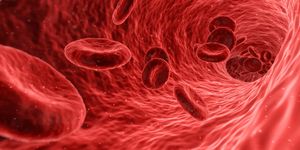Anglerfish Alert Researchers to a Third Type of Symbiosis
Anglerfish are interesting creatures we don’t know much about. Popularized by movies like Finding Nemo, the real-life anglerfish lives over 1000 meters below the surface of the sea. In that total darkness, the glowing lure that dangles from atop their foreheads can attract prey, as well as mates. The light from inside that bulb is made by bioluminescent bacteria, but because it is so difficult to acquire anglerfish (seen in the videos), we know very little about this symbiotic relationship. New research used genetic methods to learn more about these bacteria, using fish harvested in the Gulf of Mexico.
Reporting in the journal mBio, the research team has revealed that some of the genes that are critical for a bacterium to live on its own in the water have been lost from their genomes of those that live in the anglerfish. The mutually beneficial relationship between the bacteria and the fish have evolved so that they need one another to live. The bacteria generate the critical light the fish uses to eat and breed, and in return the bacteria get nutrients.
"What's particularly interesting about this specific example is that we see evidence that this evolution is still underway, even though the fish themselves evolved about 100 million years ago," noted the lead author of the study Tory Hendry, assistant professor of microbiology at Cornell University. "The bacteria are still losing genes, and it's unclear why."
The majority of the bacteria involved in known symbiotic relationships involve free-living bacteria that have not evolved a dependence on their host. Other common symbiotic relationships are between a host and intracellular bacteria that move into the cells of the host, losing huge portions of their own genomes in the process.
The anglerfish and their bulb bacteria represent a third kind of symbiotic relationship. Preliminary data suggests that the bacteria might be moving out of the anglerfish bulb into the water. "It's a new paradigm in our understanding of symbiosis in general; this is a third type of situation where the bacteria are not actually stuck with their host, but they are undergoing evolution," Hendry explained.
With genetic sequencing, the researchers found that bioluminescent bacteria in the anglerfish have 50 percent smaller genomes than free-living relatives. The genes they lack are used to generate amino acids and metabolize sugars other than glucose. The fish may be supplying the bacteria with those chemicals.
The microbes do hang on to some genes that are used for life on their own as well. They can still make a flagellum, for example, which is an appendage to propel them through water. A few chemical-sensing genes also remained.
"They were pared down to something they cared about," Hendry concluded.
Sources: AAAS/Eurekalert! Via Cornell University, mBio








